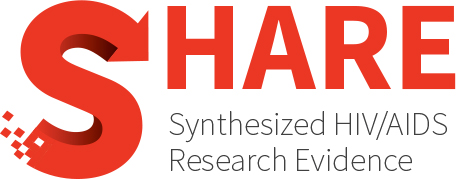Category Archives: Other
Reviews that are lab-based (e.g. genes, pharmaceuticals) or on unique groups of people (e.g. fishermen, nurses)
Comparison of treatment-emergent resistance-associated mutations and discontinuation due to adverse events among integrase strand transfer inhibitor-based single-tablet regimens and cabotegravir + rilpivirine for the treatment of virologically suppressed people with HIV: A systematic literature review and network meta-analysis
Objective This study evaluated rates of treatment‐emergent resistance‐associated mutations (TE‐RAMs) and discontinuation due to adverse events (DC‐AEs) across integrase strand transfer inhibitor (INSTI)‐based single‐tablet regimens and injectable cabotegravir + rilpivirine...
HIV infection and antiretroviral therapy impair liver function in people living with HIV: Systematic review and meta-analysis
Background: The use of antiretroviral therapy (ART) has improved the lives of people living with HIV (PLWH). However, its use is associated with secondary complications, notably hepatotoxicity. This systematic review and...
Evaluating predictive performance, validity, and applicability of machine learning models for predicting HIV treatment interruption: A systematic review
Background HIV treatment interruption remains a significant barrier to achieving global HIV/AIDS control goals. Machine learning (ML) models offer potential for predicting treatment interruption by leveraging large clinical data. Understanding...
Undetectable = Untransmittable: A cross-population systematic review and meta-analysis on awareness and acceptance
The Undetectable = Untransmittable (U=U) message is a cornerstone of HIV-related public health communication, yet global levels of awareness and acceptance remain unclear across key populations. This study aimed to...
Growth patterns of HIV-exposed and -unexposed infants in African countries: A systematic review and meta-analysis
Background/Objectives: The purpose of this study is to understand the prevalence and odds of poor growth patterns among HIV-exposed but uninfected (HEU) versus HIV-unexposed (HUU) infants in the era of antiretroviral...
Evolving patterns of macrolide and fluoroquinolone resistance in Mycoplasma genitalium: An updated systematic review and meta-analysis
Background: Over the past 5 years, since publication of the initial review, studies have provided additional data on macrolide and fluoroquinolone resistance in Mycoplasma genitalium, including data from regions previously lacking...
Immune responses to vaginal candidiasis in African women: A scoping review of cytokine profiles, T-cell activation, and gene expression
Background Recent immunological studies of vaginal candidiasis in African populations have revealed complex host‒pathogen interactions with implications for therapeutic development and HIV acquisition risk. Objective This scoping review synthesized evidence...
Assessment tools for evaluating pharmacy students’ knowledge on HIV prophylaxis: A scoping review
OBJECTIVES: This study aimed to identify and evaluate instruments used to measure pharmacy students’ knowledge of HIV prophylaxis, focusing on both preexposure prophylaxis (PrEP) and postexposure prophylaxis. METHODS: A systematic...
Challenges in elucidating HIV-1 genetic diversity in the Middle East and North Africa: A review based on a systematic search
The extensive genetic diversity of HIV-1 represents a major challenge to public health interventions, treatment, and successful vaccine design. This challenge is particularly pronounced in the Middle East and North...
Lipid nanoparticles in antiretroviral therapy: A nanotechnology breakthrough for HIV/AIDS treatment
BACKGROUND: The development of an effective drug delivery system for the treatment of HIV/AIDS is a global challenge. The conventional drug delivery approach, namely highly active antiretroviral therapy (HAART), has...
Development of research on HIV-associated neurocognitive disorder and emerging trends: a visualization analysis via CiteSpace
BACKGROUND: In the combination antiretroviral therapy era, HIV-associated neurocognitive disorder (HAND) is still widespread among HIV-infected individuals. However, there is no effective treatment for HAND, and the exact pathogenic mechanism...
